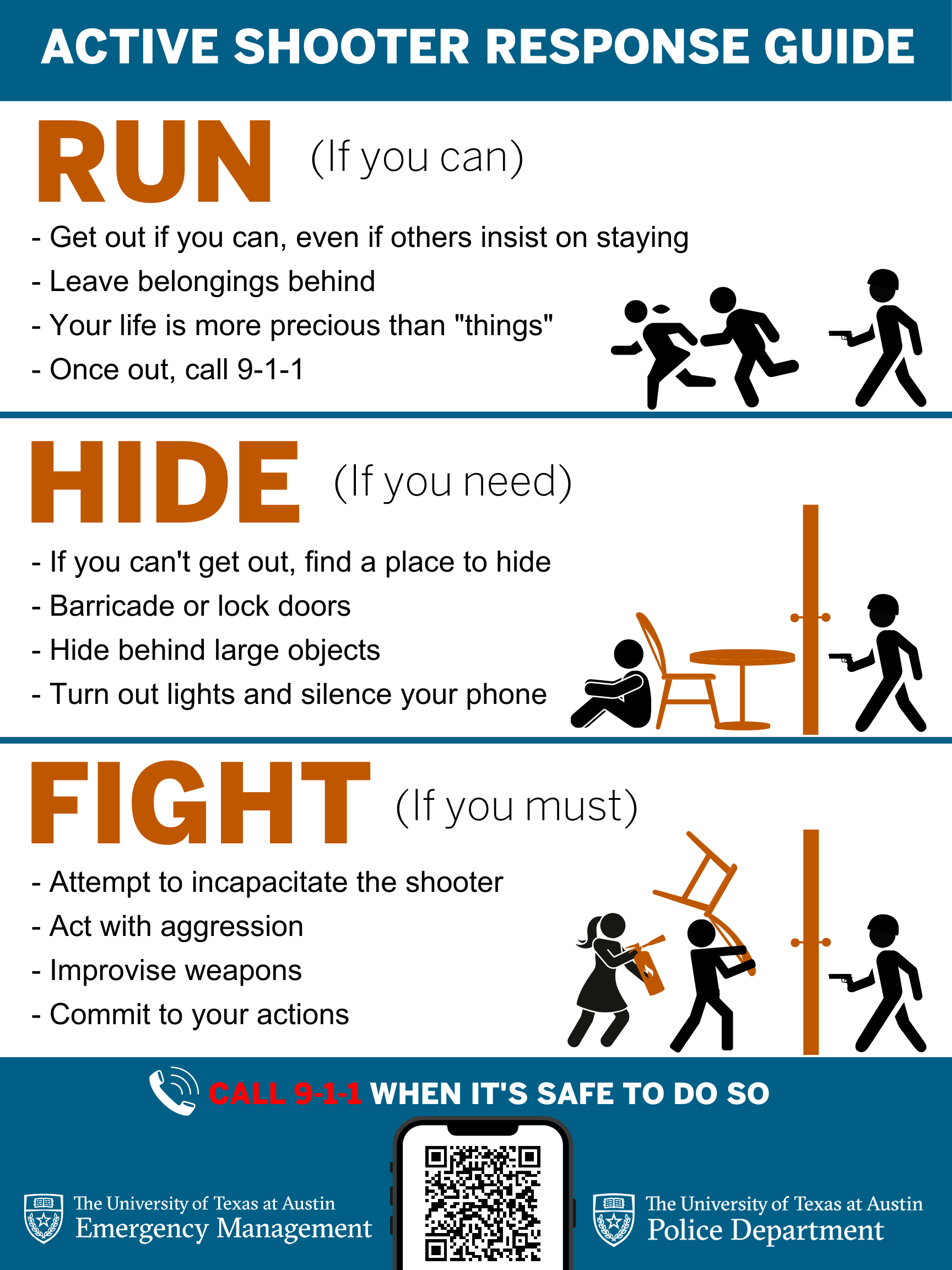The Importance of Active Shooter Training in High-Risk Environments
The Importance of Active Shooter Training in High-Risk Environments
Blog Article
Exploring the Key Parts and Purposes of Effective Energetic Shooter Training Programs
Active shooter training programs are crucial in outfitting people and companies with the needed abilities to respond effectively to possible dangers. As we explore the details of these training programs, it ends up being apparent that comprehending their extensive nature is vital to enhancing safety procedures and feedback capabilities.
Significance of Active Shooter Training
Active shooter training programs are essential for improving readiness and reaction when faced with potential hazards. These programs aim to outfit individuals, companies, and areas with the expertise and skills essential to properly reply to energetic shooter scenarios. The raising frequency and severity of such occurrences underscore the importance of aggressive measures, as prompt and enlightened actions can significantly reduce damage.
Additionally, energetic shooter training fosters a culture of safety and understanding within institutions, whether they be colleges, workplaces, or public places. Participants learn to identify very early indication and understand the value of interaction and team effort during emergencies. This training not only stresses specific safety and security but also advertises a collective duty to safeguard others.
In addition, these programs can help relieve the anxiety and concern that often accompany conversations concerning prospective risks. By giving structured support and practical methods, individuals gain confidence in their capacity to respond properly. Ultimately, the importance of active shooter training depends on its possible to save lives, reduce injuries, and grow a ready and resistant area efficient in dealing with unanticipated difficulties.
Key Elements of Training Programs
Efficient active shooter training programs typically integrate a number of crucial components made to prepare participants for real-world circumstances. The initial part is detailed education and learning on the nature of active shooter occurrences, including stats, case researches, and mental factors that affect assailants. This theoretical structure is essential for cultivating awareness and understanding amongst participants.
Following, programs frequently consist of training on individual security actions, emphasizing the "Run, Hide, Battle" strategy. Individuals learn exactly how to examine their setting, make fast choices, and take suitable activities during a dilemma. In addition, the incorporation of efficient interaction abilities is crucial, as participants have to understand how to report occurrences and share vital details with law enforcement.
An additional necessary component is the involvement of regulation enforcement or protection specialists, who offer understandings into tactical feedbacks and the significance of teamwork during a situation. In addition, programs need to resolve the mental after-effects of an energetic shooter scenario, supplying approaches for dealing and healing.
Finally, ongoing training and correspondence course are important to guarantee that knowledge remains existing and individuals feel great in their capacities. Together, these crucial elements produce an all-round training program that outfits people to respond efficiently to an active shooter occasion.
Realistic Circumstance Simulations
Practical scenario simulations are an important facet of energetic shooter training programs, giving participants with the possibility to engage in hands-on technique that mirrors possible real-life situations. These simulations boost the training experience by producing an immersive environment where people can apply theoretical knowledge in practical setups.
Via using role-playing, simulated situations, important link and specialized training centers, participants experience the instant challenges and stress factors connected with an active shooter event. This technique of training promotes fast decision-making, synergy, and the application of safety procedures under stress. It allows -responders to develop vital skills such as situational recognition, hazard assessment, and efficient evacuation procedures.
Furthermore, practical simulations aid to identify prospective weaknesses in individuals' responses, making it possible for instructors to give targeted responses and improve total preparedness. The consolidation of varying situations, consisting of various locations and assaulter accounts, additionally enriches the training experience, guaranteeing that individuals are well-appointed to handle a series of possible scenarios.
Eventually, these simulations offer not just to advise yet additionally to construct confidence among participants, promoting a feeling of preparedness that is crucial for reliable emergency situation response in the face of an active shooter threat.
Communication Techniques in Training
Clear interaction is crucial in active shooter training programs, as it directly influences the effectiveness of feedback efforts throughout a dilemma. active shooter training. Training individuals should recognize the methods and procedures that will certainly lead their activities if confronted with an energetic shooter situation. Developing clear lines of communication makes sure that all individuals included can relay details immediately and precisely

Moreover, training programs ought to stress the importance of energetic listening. Inevitably, reliable communication methods are essential for preparing individuals to respond emphatically and cohesively in the face of an energetic shooter occurrence.

Psychological Preparedness Techniques
Psychological readiness methods are progressively acknowledged as crucial components of active shooter training programs - active shooter training. These techniques intend to gear up individuals with the psychological durability essential to respond efficiently in high-stress circumstances. By promoting a frame of mind in harmony with possible hazards, participants can better handle anxiety, anxiousness, and complication throughout essential occurrences
Trick mental readiness strategies include scenario-based training and stress inoculation workouts. Scenario-based training immerses participants in practical simulations that resemble the chaos of an active shooter occasion, permitting them to exercise decision-making under stress. This direct exposure helps develop familiarity with emergency procedures, boosting instinctual actions.
Tension shot involves gradual exposure to stress-inducing scenarios, enabling individuals to establish coping systems. This can include breathing exercises, visualization techniques, and cognitive restructuring to reframe adverse ideas. By incorporating these techniques, training programs can cultivate a feeling of click to investigate self-confidence and control, which is essential in dilemma scenarios.
Moreover, post-incident mental support is important to address the emotional consequences of an active shooter occasion. Including mental health resources into training programs not only prepares people for important source immediate feedbacks however additionally advertises long-term mental well-being, inevitably adding to a more secure and a lot more resistant environment.
Conclusion
Finally, reliable active shooter training programs are important for boosting preparedness and action capabilities in the face of possible risks. By integrating critical elements such as sensible scenario simulations, interaction methods, and emotional readiness methods, these programs furnish individuals and organizations with the required skills to navigate high-stress circumstances. Ultimately, an extensive strategy to training fosters strength and advertises a culture of safety and security, thereby adding to the overall safety of areas in the event of an energetic shooter event.
Report this page